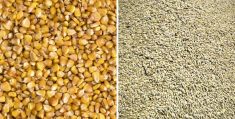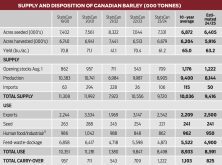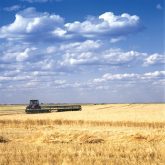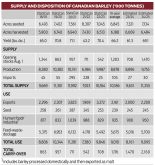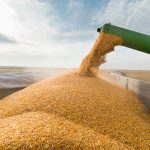Cattle producers have faced an uphill battle securing feed grain supplies during the 2021-22 crop year. After last year’s drought, which decimated the barley crop, many feedlots switched over to using U.S. corn. The large volume of purchases, along with winter conditions, resulted in rail delays, which has been common in Western Canada over the past 100 years. Federal Agriculture Minister Marie-Claude Bibeau intervened and called CP Rail’s president in an effort to make corn imports a priority. There was a brief relief but then farmers and truckers took it upon themselves to block the Coutts border crossing. These “patriotic, anthem-singing Canadians” decided to hurt and cause deep misery to cattle-producing citizens who had no influence on the COVID-19 restrictions.
Read Also

Feed grain update for Canadian beef producers
Factors affecting the feed grain market and what it means for Canadian cattle feeders
The Russian invasion of Ukraine was long-anticipated given the military build up in prior months; however, the actual event seemed to surprise much of the world. This invasion added another US$50-US$80/tonne on the world barley price and about US$50/tonne on the world corn market. This all comes on the heels of a food shortage in China and a minor drought in major corn-producing Argentina. Canadian year-to-date barley exports to China were similar to year-ago levels in the first five months of the crop year. In this article, I’ll discuss a few issues that will influence the feed grains complex over the next three to four months.
Canadian farmers are expected to seed 8.0 million acres of barley this spring. Using a traditional abandonment rate and a five-year average yield of 70.0 bushels per acre, production has the potential to reach 11.2 million tonnes, up from the 2021-22 production of 6.9 million tonnes. Most of Western Canada has experienced below-normal temperatures and above-normal precipitation through the winter. The chances of another drought are slim.
According to the USDA, U.S. farmers are expected to seed 92.0 million acres of corn, down from the 2021 planted area of 93.3 million acres. At this stage of the year, the USDA uses a trendline yield of 181 bushels per acre which would result in a crop size of 387 million tonnes, up from the 2021 production of 383 million tonnes.
At the time of writing this article, Brazil’s main corn crop, known as the safrinha crop, was 65 per cent planted. Total Brazilian corn production was expected to reach 114 million tonnes, up from last year’s crop size of 87.0 million tonnes. The year-over-year increase in Brazilian production will cause exports to swell to 43.0 million tonnes, up from the year-ago exports of 20.5 million tonnes. Argentinian production is expected to finish near 54.0 million tonnes, up from the year-ago output of 51 million tonnes. Argentina exports about 40 million tonnes of corn per year.
In the 2020-21 crop year, Ukraine exported 24 million tonnes of corn and for the 2021-22 crop year, total corn exports were estimated at 30 million tonnes before the Russian invasion. The increase in Brazilian production will largely offset the limited Ukrainian exports. The media is hyping up that Ukraine is 19 per cent of world corn trade but one has to take into account the reference year.
Russia exports about 4.5 million tonnes of barley in any given year while Ukraine exports between four to six million tonnes of barley. Between the two, they’re about 25 per cent of the world barley trade. Canadian barley exports have been above-average the past couple of years due to Chinese demand. Australia, France, Canada and Ukraine were the only barley exporters to China because of phytosanitary agreements. China banned imports of Australian barley in May 2020, which caused Chinese buyers to source from the remaining alternate destinations. This has changed. Russia is now able to sell barley to China after President Putin’s meeting with President Jinping before the Olympics.
Exports from Russia and Ukraine have come to a standstill for the time being. There is a surge in demand for corn, wheat and barley as companies source from alternate destinations to fulfil sales commitments. The markets will likely fade after the nearby demand is filled. There is no concern with Russian production. Ukraine’s winter wheat and winter barley crops are seeded but the ability to harvest later in summer is questionable. It’s highly uncertain when exports will resume with some type of normalcy from the Black Sea ports. The increase in Brazilian corn production will likely offset a large portion of the shortfall in Ukrainian corn exports. In the short term, the corn, wheat and barley markets are in shock, but prices will likely fade off the highs in a couple of months.
One thing is for certain: the markets cannot afford a crop problem in Brazil, Canada, the U.S., Europe and China. If there is a shortfall in production, there could be further upside in the cereal grains next winter. I’ve been advising major feedlots to have total feed grain coverage and then some through August 2022. When there are several variables in the market, don’t extend coverage. The textbook way to trade or make purchases is to wait until variables are more certain and then step forward accordingly. Of course, if you have been buying hand-to-mouth, you have no choice, but don’t take extensive coverage when the market is at the roof. The ability to wait in securing longer-term requirements is invaluable right now.




